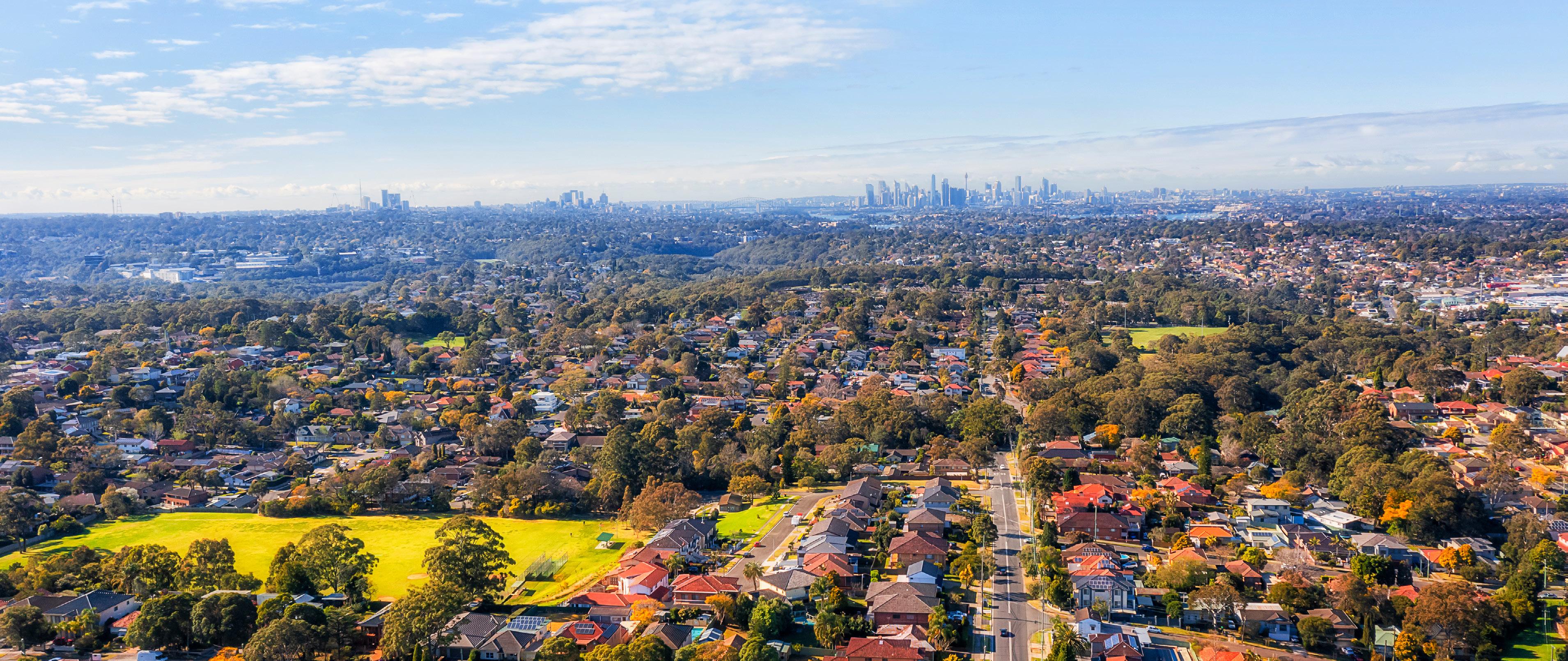VIC

ECONOMIC AND RESIDENTIAL MARKET REPORT Q2 2025


ECONOMIC AND RESIDENTIAL MARKET REPORT Q2 2025

Michael Staedler General Manager Research, Data & Insights m.staedler@rpmgrp.com.au
• Economic growth remains subdued, with annual GDP at just 1.34%
• Inflation continues to ease, but global tariff risks may impact the pace of rate cuts
• Real wages are rising, lifting consumer confidence and savings
• Housing supply remains limited due to ongoing structural challenges
Economic activity entered 2025 with subdued momentum. GDP grew just 0.21% over Q2 2025, bringing the annual growth to 1.34%, which is well below the long term average of 3.3%
Household spending was one of the few positives. Both essentials and discretionary categories contributed to growth, suggesting the real wage gains are starting to lift confidence. Public investment, however, pulled back. Major projects across energy, transport, health and education have either wrapped up or hit delays, leading to a slowdown in government-led activity.
Inflation continues to ease. The CPI rose 0.7% over the quarter, lower than the revised 0.9% rise of the previous quarter. On an annual basis, inflation now sits at 2.1%, its lowest level since Q1 2021 and comfortably within the RBA’s 2-3% target range.
The downward trend may not be smooth, however.
Rising global tariff tensions posse a risk. Tariffs increase the cost of goods, and if inflation flares up again, the RBA could ease the speed of rate cuts. But if households and businesses begin reining back, deflationary pressures may return, prompting the RBA to move faster on easing.
Real wages continue to improve. In Q1, wages rose 0.98%, slightly above the 0.93% lift in prices. This helped lift the household savings ratio to 5.2% and added to recent gains in consumer sentiment.
Population growth has slowed, offering brief relief to Australia’s tight housing market. The federal government’s cap on permanent migration is starting to have an effect, with the net overseas migration figures easing to just over 100,000 in 2024. But slower population growth doesn’t solve the structural issues to housing delivery.
The development industry still faces serious constraints to delivery. Many large scale projects remain commercially unfeasible. Until those barriers shift, the industry's ability to deliver new housing at scale remains limited, leaving a critical gap between demand and supply.
For more information, please visit: www.rpmgrp.com.au
Our Research Consultancy Services create bespoke reports crafted to your specifications, translating rich data into in-depth analysis. For a bespoke report, email the team at: contactus@rpmgrp.com.au


GDP Growth - Q1 2025
2025 started on a weak note with a modest gain of just 0.20% in Q1 – the smallest gain since Q1 2024. On an annual basis, GDP growth came in at 1.34%, well shy of the 3.30% long-term average.
Year on year growth for the quarter was a meek 1.07%, barely improved on the previous quarter and comparable to the weakest result seen in the early 1990s (excluding the pandemic years).
A net zero effect took place in investment activity. Private investment rose 0.7%, contributing 0.1ppt to GDP, largely driven by a 2.6% lift in dwelling investment. However, this was offset by a 2.0% fall in public investment, which detracted 0.1ppt from GDP growth. The decline came from both state and local public corporations and general government, reflecting the wind down or delay of several major infrastructure works across energy, transport, health, and education sectors.
The terms of trade edged higher as export prices rose 2.7%, narrowly outpacing a 2.6% increase in import prices. Iron ore led the export gains, buoyed by steady demand from China and weather-related supply issues. Import prices climbed alongside a weakening Australian dollar, which added cost pressure on inbound goods.
Current Savings Rate 5.2%
On the back of stage 3 tax cuts and continued improved real wage growth, the household savings ratio increased to 5.2%, the highest since Q2 2022.
Long Term Savings Rate (2015-2019) 5.9%
Historically low interest rates, combined with lockdown mandates restricting mobility and spending choices, allowed households to build a solid savings buffer through the pandemic. Peak Savings Rate During Covid 23.9%
Average Savings Ratio = 5.9% 2015-2019
Source: Australian Bureau of Statistics
Discretionary spending 0.3%
Household consumption rose 0.70% in Q1, up from 0.42% in Q4 2024, driven by both essential and discretionary spending.
Spending on essentials rose 0.38% largely due to higher energy costs, while discretionary spending climbed 0.32%, boosted by more post-Christmas specials on new vehicles, clothing and footwear.
Source: Australian Bureau of Statistics
After cutting the cash rate by 25 basis points in February to 4.1% (the first reduction since 2020) the RBA followed up with another cut in May, bringing the rate to 3.85%, matching the level from May 2023. A third cut was expected in July but the RBA held, seeking firmer evidence that inflation was easing. In hindsight, the decision aligned with the RBA’s consistently cautious messaging on inflation risks.
Markets still anticipate CPI to land within target, opening the door for an August cut, with a potential fourth reduction on the cards for November.
Inflation rose 0.7% in Q2 2025, lower than the revised 0.9% rise in the previous quarter. Annually, inflation now sits at 2.1%, down from 2.4% in Q1 and the lowest since Q1 2021. This places it comfortably within the RBA’s target range.
Trimmed mean inflation, a key measure watched by the RBA, also eased to 2.7% over the year, down from 2.9%. This lends further weight to expectations of a rate cut in August. However, the gap between trimmed and headline inflation suggest further reductions will hinge on pricing movements in key categories.
Source:
The hourly rate of pay index rose 0.98% over Q1, up slightly over the 0.93% CPI growth. This shift continues the recent trend with wages outpacing inflation which has alleviated some pressure on household budgets.
As a result, the annual growth in the Wage Price Index reached 3.40%, surpassing the 2.40% annual CPI.
Unemployment Rate -June 2025
Victoria added 12,825 jobs in June, recovering most of the 14,000 jobs lost in May. This included the 17,108 gains in part-time jobs, partly offset by a fall of 4,283 full-time jobs.
Unemployment has ranged between 4.2% and 4.7% over the past year, peaking in January, coinciding with weaker employment and fewer job ads.
While Victoria’s labour market remains more stable than other states, signs point to a gradual rise in unemployment, driven by population growth and slower economic momentum.
The unemployment rate has edged up over the last three months, from 4.2% to 4.3%, then to 4.6% in June.
Consumer sentiment rose 0.5% in July, hitting 93.1 and recovering more than half of April’s tariffdriven dip. However, the RBA’s unexpected decision to hold rates tempered the rebound. Ahead of the announcement, sentiment was at 95.6 - dropping sharply after the decision to hold.
This volatility reflects a fragile outlook where confidence hinges on positive news. Expectations for personal finances returned to positive territory, but uncertainty around the broader economy and job market weighed on the index.
Sentiment related to housing dipped slightly, though expectations for price growth remain high, reinforcing a cautiously optimistic (though still tentative) market view.
The latest NAB Business Survey points to stabilising conditions and early signs of turnaround after a weak start to the year.
Confidence jumped sharply in June (its highest level in 12 months) though it still trails overall business conditions. The gap between the two has narrowed considerably.
Improvements were seen across retail (despite low underlying conditions), manufacturing, finance, and business services, while wholesale and transport sectors recorded declines.
The uptick in confidence was driven by expectations for a further rate cut to moderate cost pressures and a rebound in demand indicators such as forward orders.
Source: National Australia Bank Survey
Over the full year, Victoria added 132,572 people to its population, a 26% decline from 2023. This slowing trend is expected to continue through 2025. Population Change Q4 2024
Victoria’s population growth is losing momentum. In Q4 2024, the state recorded a net increase of 25,248 people. This is 23% lower than in Q3 and 22% below the same quarter in 2023.
+6,492
The figure reflects a broader pattern of fluctuation throughout the year. After reaching a record high in Q1, natural increase fell 45% in Q2, stabilised in Q3, then fell a further 33% in Q4 2024, marking a 12-month low. As a result, natural increase for 2025 is tracking 29% below 2024 levels.
Net overseas migration to fell 18% in Q4 2024, marking its second lowest quarterly result since Q4 2021 (excluding Q2 2024). The decline follows the introduction of capped Federal migration intake and tighter student visa policies. Despite the drop, overseas migration added 100,503 persons in 2024, remaining the state’s largest population driver. That said, the annual total was 35% lower than in 2023.
+19,411 -655
Victoria recorded a net interstate migration loss of 655 people in Q4 2024, continuing a period of minimal cross border movement. Across the full year, 3,203 more people left the state than arrived. While well below the large outflows of the lockdown years, the annual loss remains far short of the pre-pandemic average of 2,900 net gains per quarter.

Melbourne’s residential property market peaked at $1.125 million in Q4 2021, following a sharp 36% rise over the previous two years. Many expected a soft landing with prices levelling out and growth slowing. But that outlook was short lived.
From May 2022 to Nov 2023, in an attempt to curb rising inflation, the RBA raised interest rates gradually to a 4.35% high, triggering a sharp market correction. Over the next two years, median residential prices fell 19.1%, unwinding much of the prior gains.
Early 2024 brought some signs of stabilisation. Confidence grew that interest rates had peaked, and strong population growth in Victoria helped support underlying demand. House prices lifted 1.6% in the first few months of the year. Though as cost-ofliving pressures and inflation concerns persisted, buyer sentiment softened once again. By year-end, the median house price had slipped below $900,000 – its lowest level in over four years.
The February rate cut marked a turning point. House prices recovered to $920,500 in Q1 2025, matching Q1 2024 levels and breaking a 12-month decline. A further cut in May, and expectations of another in July, helped lift confidence, resulting in a modest uptick in Q2. This saw the first rolling annual increase in values since mid-2022.
In Q2 2025, median prices were:
• $924,000 for houses
(+0.4% quarterly change, +1.0% year-on-year)
• $635,000 for units
(+1.3% quarterly change, +1.4% year-on-year)
In contrast, the greenfield land market charted rolling annual growth rates since Q1 2021. However, growth has started to flatten in 2025. A clear price ceiling appears to have formed, and incentives that were once offered discreetly are now being priced in from the outset.
Source: REIV and RPM Research, Data & Insights
of Owner Occupier Loans - Q1 2025
Owner occupier loan applications fell by a sharp 18.5% over the quarter to 21,896. Despite the quarterly decline, volumes were still 2.3% higher than the same period last year.
Both first home buyers (FHB) and non-FHBs recorded quarterly falls of more than 18%. However, FHBs increased their share of total loans slightly, accounting for 39% of all applications.
Year on year, FHB activity rose by 5%, while non-FHB lending edged up just 0.6%.
Source: Australian Bureau
$517,549
FHB Loan Size - Q1 2025
After reaching a record high in Q4 2024, the average loan size for FHBs eased by 1% in Q1 2025 to $517,549. Despite the modest decline, it remains $79,601 (+17.3%) higher than it was in Q2 2020, at the onset of the HomeBuilder scheme and record low interest rates – underlining the sustained demand in the sub$600,000 segment.
Non-FHBs, meanwhile, set a record in Q1 with an average loan size of $644,601, up 0.9%. With improving financial conditions, this group is likely to see further growth while maintaining standard LVR levels.
The gap between the two cohorts has widened significantly – from $18,166 (22%) in Q2 2020 to a record $127,052 (24.5%) today.
Total dwelling approvals - Q2 2025
Dwelling approvals fell a further 9.4% in Q2 2025 to 12,601, marking a soft continuation to the year and reversing much of the momentum built in late 2024. On an annual basis, activity was unchanged, highlighting the persistent developer caution due to elevated construction costs and high presale thresholds which continue to weigh on project feasibility.
Detached house and townhome approvals were the only segments to record growth over the quarter. Detached houses rose to 8,123 approvals, a 9.1% quarterly increase and a 5.5% higher than the same time last year. Townhomes also rose 9.1% over the quarter to 2,576 approvals, with a much stronger year on year gain of 19.2%.
These gains, however, were more than offset by a sharp 53.6% drop in apartment approvals, which fell to just 1,902 for the quarter. Apartment data remains volatile, as reflected by the contrasting 38% gain from the same period a year earlier.
Approvals by Dwelling Type
Total Dwellings
14,801
Total Commencements - Q1 2025
Despite the recent decline in approvals, total dwelling commencements rose 17.4% in Q1 2025. This lift reflects stabilising construction costs, which, while still elevated, have eased from the sharp increases seen in previous years. With more predictable cost trajectories, developers (particularly those in the boutique space) have gained confidence to move projects into the construction phase.
However, total dwelling commencements remain subdued. Q1 figures sit 6% below the decade average, weighed down by detached house activity, which is currently 6.8% below the decade average.
A total of 11,879 completions were recorded for Q1 2025, down 23.1% from the previous quarter and 28.9% lower than the same time last year. While this drop is significant, it’s important to note that quarterly completion figures often fluctuate due to project timing and delivery schedules.

Michael Staedler
General Manager
Research, Data & Insights
m.staedler@rpmgrp.com.au
The economic outlook remains cautiously optimistic. Inflation is easing, interest rates are beginning to fall, there is an uplift in real wages, and households are benefiting from energy cost relief. A robust job market and sustained government spending are also keeping the economy steady.
Even so, 2025 has started sluggishly. Consumer confidence remains fragile, weighed down by global trade instability and ongoing geopolitical conflict. Households remain hesitant, pulling back on spending in response to the uncertainty.
Despite this, there is a silver lining. Recent RBA analysis suggest that the broader impact of the Trump tariffs policy on Australian GDP will be modest. The US is not one of our major trading partners, so the primary effect will be on prices, not volumes.
In fact, the redirection of goods (particularly from China and Southeast Asia) could bring benefits for Australian consumers. With the US less accessible as a market, excess supply of items like electronics, furniture, and clothing may find its way here, pushing prices down and lifting import volumes. This is a positive for consumers, though it may intensify completion for local producers.
If tariffs on China persist, slower production there could reduce demand for Australia’s natural resources, posing a risk to export earnings.
Closer to home, household budgets are gradually improving. Real wages are growing and borrowing costs are expected to fall further. This should support a recovery in discretionary spending and, in turn, GDP growth through 2025 and 2026, even if it remains below long term trends.
Markets are pricing in two interest rate cuts this year, one in August and another late in the year, bringing the cash rate down to 3.35%.
In short, momentum is building, but offshore risks remain the biggest threat to economic stability. The RBA is watching closely, and for now, remains cautious.
For more information, please visit: www.rpmgrp.com.au
Our Research Consultancy Services create bespoke reports crafted to your specifications, translating rich data into in-depth analysis. For a bespoke report, email the team at: contactus@rpmgrp.com.au
Research, Data & Insights

Michael Staedler
General Manager
Research, Data & Insights m.staedler@rpmgrp.com.au

Andrew Raponi
Senior Research Manager a.raponi@rpmgrp.com.au

Laurence Rao
Research Manager - VIC laurence@rpmgrp.com.au

Simon Brinkman
Research Manager - QLD & NSW simon@rpmgrp.com.au
Executive, Sales and Marketing Leadership


Luke Kelly
National Managing Director
Built Form luke@rpmgrp.com.au

Rod Anderson
National Managing Director Communities rod@rpmgrp.com.au

Peter Grant
National Managing Director Business Development peter@rpmgrp.com.au

Imogene Schaefer
General Manager
Marketing imogene@rpmgrp.com.au
Michael Vilar
General Manager
Medium Density michaelv@rpmgrp.com.au

Greg Rankin
General Manager Communities gregr@rpmgrp.com.au

Johnathon Driessen
General Manager
Communities johnathon@rpmgrp.com.au

Tim Hyland
National Strategy Manager
Transactions & Advisory tim@rpmgrp.com.au
For detailed insights or custom reporting, contact the team at: contactus@rpmgrp.com.au
Our latest reports are also available by scanning the QR code below.